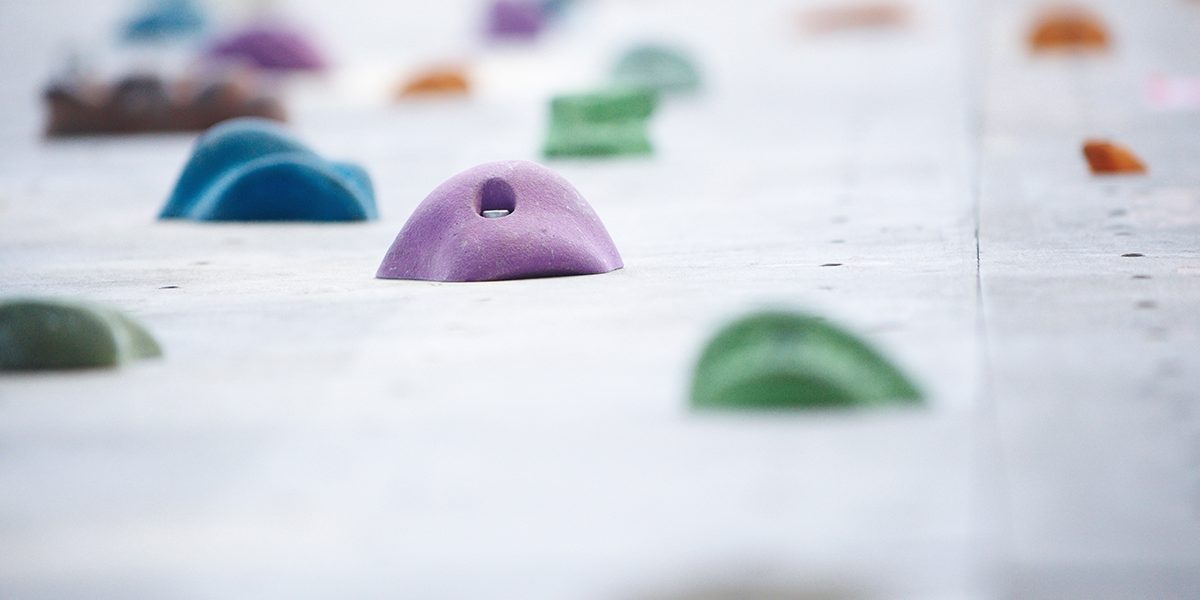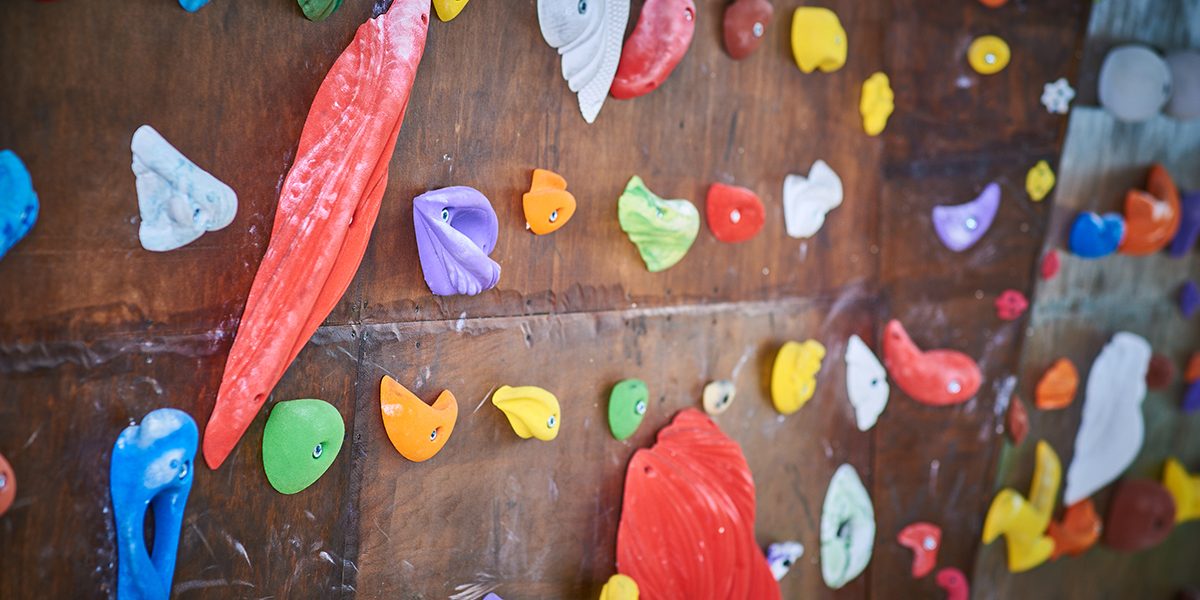Some rock climbing holds are friendly, like those nice ergonomic jugs. On the other hand, credit card crimps, for example, can feel torturous and make you question why you even like climbing.
To enjoy rock climbing more, you should understand how to use different holds. Don’t crimp on slopers— just don’t.
What Are Climbing Holds?

Rock climbing holds are protrusions found on walls used to ascend a route. They are created by various factors, such as running water, wind erosion, rock fall, etc., and have been continually shaped for millions of years.
Indoor climbing holds are mostly made from plastic or wood, but their designs are inspired by what’s found in nature.
Different Types of Climbing Holds
Some handholds are obvious. They can have a rounded edge and be comfortable to grab, be sharp and tiny, or be monstrous with no real depression to grip.
Usually, the more complex the handhold, the harder the grade of a climb. Below is a list of every type of climbing hold you’ll find and how to use it the next time you’re at the gym.
Crimp – Small edges that only fit your fingers or fingertips.
Cracks – The negative space of a climbing wall.
Flake – Thin, partly detached piece of rock you can potentially grab from any exposed side. These are only found outside but are important to know.
Jug – Large, in-cut hold that can be grabbed with all your fingers. The friendliest type of holds and ones you’ll find on the easiest climbs.
Ledge – Large hold like a Jug, but flat.
Pinch – A rectangle-looking hold that can be wide or narrow, vertical or horizontal, and everything in between.
Pockets – A hole that you stick your fingers into. They can be two or three-fingered and can be shallow or deep.
(Mono) – This is a pocket that only a single finger can fit.)
Sloper – Rounded edges or blobs. They can be directional or symmetrical.
Undercling – Any climbing hold but is turned upside down!
Side Pull – Also any climbing hold but is turned sideways!
How to Use Different Climbing Holds

Those are the most common climbing holds in the wild and at the climbing gym. Understanding how to use them best will take some practice, though. Below, you can see how each hold is used.
Crimps: Fit as many of your fingers on the hold as possible and pull down.
– Open-Hand Crimp: When your fingertips are on a crimp, and your hand is below the hold.
– Half-Crimp: When your fingertips are on a crimp, and your knuckles are bent around 90°.
– Full Crimp: When you’re half-crimping, bring your thumb over the top of your pointer finger.
Avoid full crimping at your max until your fingers have strengthened from climbing for a while. Full crimping is a major cause of finger injuries in climbing.
Cracks: Fill the space with whatever limb you jam into it, such as hand jams, fist jams, finger locks, foot jams, etc.
Crack climbing is an entire discipline that requires a specific technique. Master crack climbers have dedicated countless hours to understanding the intricacies of different jams.
Flake: Check if it’s safe by knocking on it and listening to how hollow it sounds. If it’s good, a flake can be used as a jug! Identifying safe flakes takes experience. Don’t assume every flake is bomber.
Jug: Grab the hold with as much of your hand as possible, curling your fingers over it.
Ledge: Stay under the ledge to use it until you must move for the next hold. The higher you move your body on a ledge hold, the harder it is to hold on.
Pinch: Wrap your fingers around one side and thumb around the other to squeeze the hold together.
Pocket: Fit as many fingers as you can. Treat these like a jug if they’re deep or a crimp if they’re shallow.
Sloper: Try to use as much of your hand as possible and pull away from the direction they’re facing. Maximum friction is your friend with slopers; use as much surface area as possible.
Try to become comfortable using every type of climbing hold. Most climbers tend to steer toward climbs with specific holds they’re strongest using. You can enjoy many more climbs by focusing on each type of climbing hold!
